A frosty morning in Foxford. Apologies for disappearing last week, I took a week off for a holiday and a quick visit to see the sun. Before leaving I had great ideas of doing some angling while away, a Tuna perhaps. No such luck, we went to Tenerife and the day we arrived there was a huge swell in the ocean caused by a storm a few days previously. Another storm was brewing (Claudia), so all the boats were safely tied up and no one was interested in going out. No Tuna for Mike on this trip but someday it will happen. I know you are going to say that I could find a Tuna a lot closer to home and that is true. To be honest, Tuna or big game fishing in general doesn’t really do it for me but if I could throw it in as a special day out while on holiday that would be great. I don’t think I would pay the money or take the time to get battered off the west coast of Ireland for one. We arrived back to Ireland to be greeted at Knock airport by wind and hail, a shock to the system. While we were away the weather was very wet and water levels are well up, the rivers and Loughs are out in the fields so there has been no angling here either
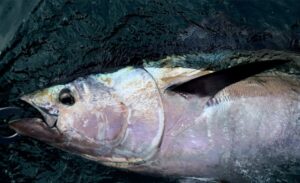
Winter can be a tough period for a lot of people, the winter blues are no exaggeration and when darkness falls at 5pm the nights can be long. It’s great to see our little club have taken on a fly tying evening in which they come together on a night each week and tie a few flies. I haven’t joined in yet but I’m sure there is as much chat as fly tying which is what its all about, well done lads.
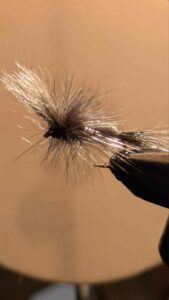
A perfect off season activity: Fly tying is the perfect antidote to the winter blues. It keeps our minds engaged with fishing, allows us to replenish boxes, and provides a deep sense of accomplishment. It’s a meditative, hands-on hobby that turns a quiet evening into a productive session, dreaming of the hatches and rises to come. The best thing is you don’t really have to know what you are doing to produce a fly that will fool a fish. There is a special satisfaction in catching a fish on a fly you have created yourself.
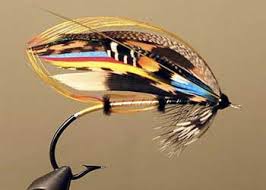
The Timeless Art of Fly Tying: More Than Just Saving Money
In my early days of fly tying (40+ years ago) it was seen as a cheap way of obtaining a good collection of flies. With rising costs of materials, that is not the case today and we do it for other reasons. Tying your own flies is a deeply rewarding pursuit, a tradition passed down through generations. As we now see in Foxford Angling Club where the older generation are passing the skills on to the next generation. While many beginners are drawn in by the idea of saving money, seasoned tyers know the real treasure isn’t in your wallet, but in the infinite creativity and connection it brings to your fishing.
The Real Benefit: Customisation, Not Cost-Cutting
As I said already, you probably won’t save a fortune. An initial investment in a quality vice, tools, and a diverse range of materials can be significant. A single genetic cape can cost as much as two dozen pre-tied flies. The true advantage lies in the power of variation. Can’t find a nymph with a slim enough profile? Tie it. Need a shrimp fly with a particular shade of Orange? You can make it. The ability to tweak size, colour, weight, and materials to match the exact hatch or water conditions you face is an undeniable edge. You become the architect of your own success, creating patterns that simply don’t exist, even in Tiernan Brothers..
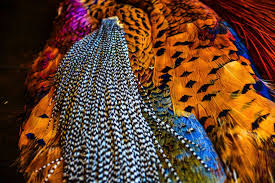
A Lesson from the 19th Century: From Rare Feathers to Synthetic Wonders
The fly tyers of the 19th century were masters of observation and improvisation, but their material palette was vastly different. They relied almost exclusively on natural materials found in their immediate environment—and beyond. Travelling anglers who visited the west of Ireland brought rare and highly sought after materials. Exotic and specific feathers from birds like the Indian Crow, Blue Chatterer, and various birds of paradise. These materials were prized but came with no understanding of sustainability. Fur from protected species was also common. Not that many years ago, I myself was gifted a patch of Monkey fur and I can only imagine it was from a poor animal that was killed for its fur or some other part that had a monetary value. The focus was on using what was most effective, with little regard for conservation.
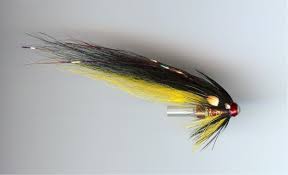
Now: Today, we have both an ethical and legal responsibility. The CITES (Convention on International Trade in Endangered Species) agreement strictly regulates the trade of feathers and animal parts from protected species like certain macaws, jungle cock, and others once staples in classic salmon flies. Thankfully, the modern fly tier has an incredible arsenal of synthetic and ethically sourced materials. UV resins, holographic tinsels,synthetic dubbings and furs can mimic and often outperform their natural counterparts. We can honour the patterns of the past with modern substitutions, ensuring the art survives without harming the species that inspired it.
Hints and Tips for Getting Started
Start Simple: Don’t try to tie a perfect size 16 dry fly on your first attempt. To master the fundamentals of thread control and material placement, begin with larger, simpler patterns like a Black Pennell or a hairwing salmon fly such as a stoats tail.

Light is Your Best Friend: This cannot be overstated. A good, bright, adjustable desk lamp is more important than an expensive vice. It reduces eye strain and helps you see the delicate details of your work.
Embrace Magnification: Don’t be shy about using a magnifying lamp or visor. Protecting your eyesight and allowing you to see fine details will dramatically improve the quality and enjoyment of your tying.
Organise, Organise, Organise: A place for everything and everything in its place. Use clear tackle boxes for hooks, beads, and dubbing, and binders with plastic sleeves for feathers and fur. Prepare the materials you need for the pattern you are attempting and You’ll spend more time tying and less time searching.
Join a group: Whether online or a local club, connecting with other tyers is invaluable for learning new techniques, getting feedback, and sharing a passion.
Don’t be disheartened: Your first attempt may not be perfect but that’s the case with most things. Flies do not need to be perfect to catch fish.

The Classic Black Pennell
Here is one to get you started. A timeless wet fly pattern, the Black Pennell is a fantastic all-rounder for trout and it is simple enough for a beginner but incorporates essential techniques.
Hook: Wet fly hook, size 10-14
Thread: Black 8/0 Uni-Thread
Tail: Golden Pheasant Tippet fibres (or a synthetic substitute)
Body: Black Floss, thinly built
Ribbing: Fine oval silver or silver wire
Hackle: Soft black hen hackle
Tying Steps
The Foundation: Secure your hook in the vice. Start your thread just behind the eye and wrap a smooth, tight base back to the bend of the hook.
The Tail: Select a small bunch of 5-7 Golden Pheasant tippet fibres. Measure them to be roughly the length of the hook shank. Tie them in at the bend, on top of the hook, so the tail sweeps back slightly upwards.
The Ribbing: Take a piece of fine oval silver. Tie it in at the bend, on top of the thread base.
Build the Body: Wind your thread forward to about 1/8 inch behind the hook eye, Wrap the black floss along the shank of the hook creating a smooth, tapered body.
Wrap the Rib: Now, carefully spiral the oval silver forward in 4-5 even turns. The wraps should be open, allowing the black thread body to show through. Once you reach the thread, tie off the wire and trim the excess.
Prepare the Hackle: Select a soft, webby black hen hackle feather. Strip the fluffy fibres from the base. Tie it in by its tip, shiny side down, at the front of the body.
Wrap the Hackle: Using your hackle pliers, gently pull the feather and make 2-3 turns of hackle behind the hook eye. This creates a lovely, breathing collar. Secure it with your thread.
Finish the Head: Trim the excess hackle tip. Build a small, neat head with your thread, whip finish, and add a drop of head cement or UV resin.
You have just tied a classic! The Black Pennell is a testament to the idea that effective flies do not need to be complex. So, embrace the off-season, set up your vice in a pool of good light, and discover the profound satisfaction of catching a fish on a fly you created with your own hands.
Happy tying!
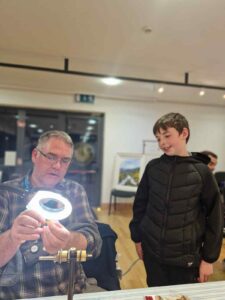
Comments to mtiern@gmail.com

